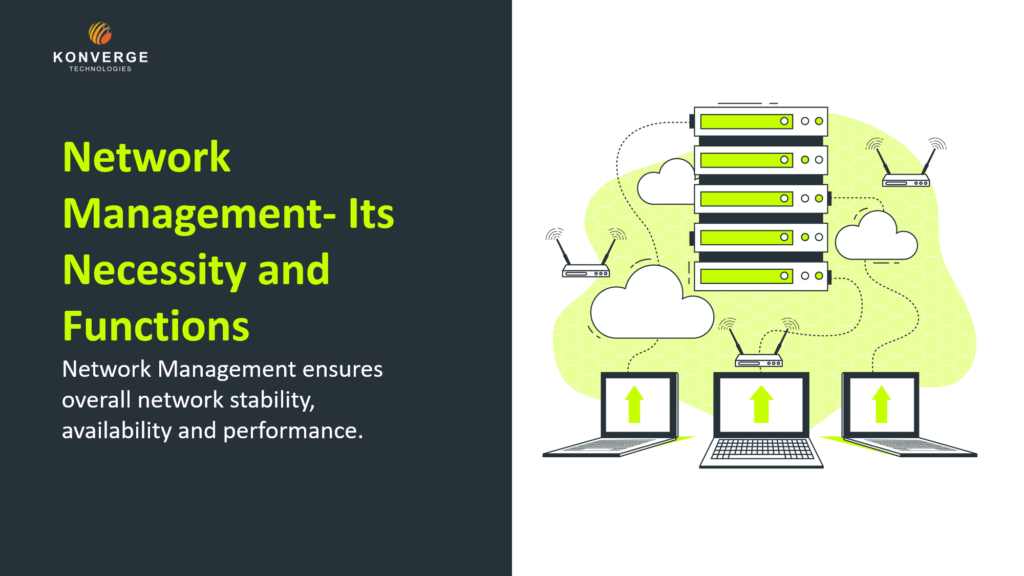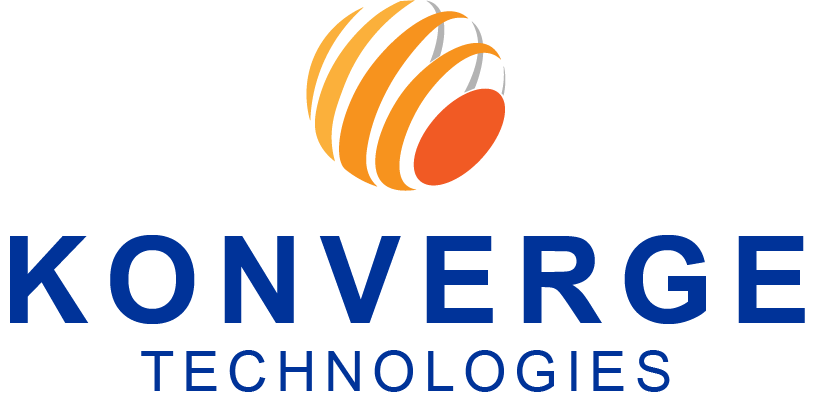
Network Management- Its Necessity and Functions

What drives the world today is the ability of machines to connect and interact with each other. In laymen’s language, we call it a computer network and as this network grows from a few computers to 100s and 1000s, the complexity to maintain them also increases. This is where network management steps in.
Network management is simply the effective management of your business’s computer network. It helps you to know the state of your network, operates and monitors it, enables early discovery of network problems, etc. Network management provides administrators with tools and empowers them with protocols and processes to optimise network operations.
The key components of network management
What began as a focus on finding and eliminating errors, network management today involves these various components:
Fault Management: As the name already suggests, it is the process of identifying and fixing errors. This minimises the downtime of network and improves uptime. To keep the network up and running, quickly finding and resolving issues on the network is important. Whether it is a routing loop or a misconfigured post, it is pivotal for administrators to find the issue and solve it as fast as possible.
Configuration management: It is the process of maintaining and administering the device configurations for a healthy and secured network. It requires a system to store the configurations, manage and update, push them to devices and help in network topology changes.
Performance management: Performance management involves monitoring the performance of the network and ensuring SLA expectations are met for performance. It helps in understanding how much bandwidth the network is utilizing. This also involves network capacity planning and monitoring the trends of degraded performance across the network. This helps in preventing problems proactively.
Security Management: This ensures that your network and devices are protected from any kind of unauthorised access. Here we manage firewalls, servers, routers, and switches that help in preventing security threats. Network management helps in managing things like authorization, authentication and accounting. This takes care of specifying who needs access to what.
Network Management Protocol
This is not a component of network management but is a network protocol that outlines the policies and processes necessary for network management, monitoring and maintenance. These protocols help the network manager to evaluate and troubleshoot the network connection between the device and the host. It provides information about network latency, availability, data loss, errors, etc.
Why is it a necessity?
Since the early days of the internet, the need to maintain and monitor interconnected devices has been a requirement. With more devices on LAN and WAN, the challenge of detecting errors became difficult let alone diagnosing errors before they occur. This opened doors for network management requirements for every business.
While it may seem like a one time process, it is an ongoing process where continuous adaptation is important to help network administrators stay on top of the network game.
To ensure the smooth functioning of your company’s IT solutions, a network management system helps you to monitor the system, stay updated for virus and other threats, be prepared for any software or hardware failures, and ensures easy maintenance.
Benefits of having a strong network management system in place
With the above components, you get the following benefits
Cost reduction: When you meet your SLAs, you are able to identify the unused connections and devices, and you save a lot in terms of money. You also save time and money, when you are able to solve problems faster.
Productivity: A no brainer, when you have a strong system in place, your productivity is improved automatically. You don’t have to spend time waiting for issues to happen, you can keep a check on the system for smooth functioning and so much more. It allows escaping from the pressure of red alerts and lets you focus on efficiency.
Reducing downtime: Every system at some point faces downtime. When you have a network management system in place, this downtime is highly reduced.
Network silo minimization: The network management system helps you to discover new networks and links. It helps you identify new subnets basically increasing your view of what’s out there on your network.
All this might seem a little intimidating to you right now but this is a must-have for all businesses competing in the market. Having a network administrator is the best solution to secure and maintain your network. Konverge technologies help you to increase your network efficiency and reduces the risks, making your network reliable. With complete assistance to make you network ready, we help you with the best network optimization services.
Recent Posts


Cost vs ROI: Choosing a conference system for global offices


